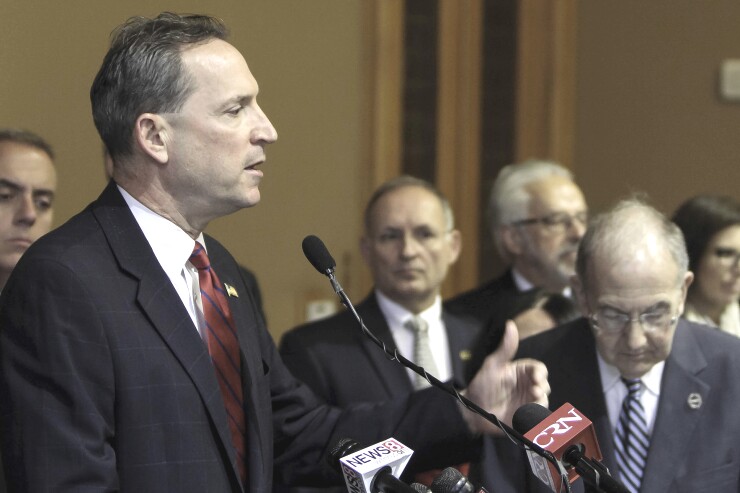HARTFORD, Conn. -- Connecticut's budget crisis took a dramatic turn as Republicans pushed through a spending plan that the Democratic governor plans to veto.
Gov. Dannel Malloy, wrestling with dissent from his own party, promised to veto the $40.7 billion biennial budget that the legislature approved Friday after some moderate Democrats rebelled and voted for a GOP-crafted plan.
Both sides acknowledge the need for a bipartisan agreement to end a three-month stalemate that leaves unanswered questions about the fate of state aid to bankruptcy candidate Hartford and whether more rating downgrades are ahead for Connecticut.

Three Democrats in the Senate and six in the House of Representatives crossed the aisle and sided with the GOP spending plan, throwing the state's balance of power into question and furthering the risk of Malloy running the state by an even more austere executive order.
Malloy said he would issue a doomsday order on Oct. 1 if no budget is in place.
The rating agencies have cited late and imbalanced budgets, and high debt in a series of general obligation downgrades. S&P and Fitch Ratings assign Connecticut GOs an A-plus rating, while Moody’s Investors Service rates them A1. Kroll Bond Rating Agency assigns AA-minus.
Hartford Mayor Luke Bronin has asked the state for an additional $40 million in aid as part of his plan to keep the capital city out of Chapter 9. The GOP budget would provide considerably less. Bronin, who has scheduled a bondholder call for Sept. 25, also wants bondholder and labor concessions.
University of Connecticut president Susan Herbst said UConn stands to lose $300 million over two years.
The Senate, split 18-18 between Democrats and Republicans, approved the GOP budget 21-15 while In House approval around 3 a.m. Saturday was 77-73 in a chamber where Democrats hold a 79-72 edge.
Democrats have dominated the state for about two decades.
“I think we have to turn the corner and get our finances straight,” said one of the crossovers, Sen. Paul Doyle, D-Wethersfield. “I’m risking everything but that’s fine with me.
“I’m sick of threats. There have been a lot of threats.”
A continued budget impasse would impact state and local governments.
"If there is no budget solution, then our immediate focus will be on those communities that have lower reserves and liquidity and can't fully absorb the cuts instituted by the executive order," S&P Global Ratings said Friday. "At this stage of the fiscal year, any drastic midyear adjustments, while possible, would be very difficult to implement."
S&P expects many communities, depending on whether they began the fiscal year with a contingency, to use some portions of reserves to offset any loss in state aid.
"Based on our review, of the 88 S&P Global Ratings-rated issues, virtually all will have to absorb cuts of 1% or more of general fund revenues," said S&P.
Roughly 37 communities will have to absorb cuts in aid representing greater than 10% revenues, according to S&P, and some, including Beacon Falls and Plymouth, would have to absorb a loss of nearly one-quarter of their general fund revenues.
According to Municipal Market Analytics, Connecticut communities must manage better amid local aid cuts. “Gimmicks and non-sustainable solutions” will heighten downgrade risk, said MMA.
A Hartford bankruptcy, according to MMA, would force investors to assume that weaker cities could file, which would remove marginal buyers and push out spreads. Also, the added pressure of Hartford bailouts would suppress Connecticut’s ratings and increase capital market costs.





